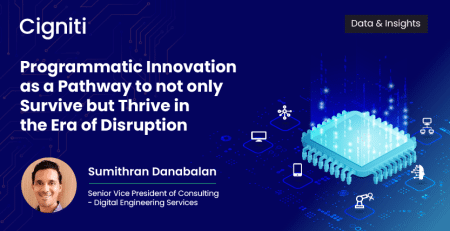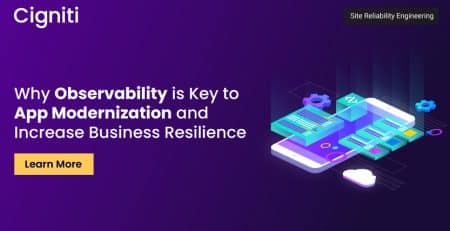3 Key Components Organizations Must Consider to Build Long-Term Business Resilience
Organizations nowadays are constantly being disrupted by new technology, disruptive startups, geopolitical issues, and economic changes. As organizations face a fast-changing world, the risks of geopolitical instability, surging inflation, and economic insecurity have become increasingly common.
Cybercrime, supply chain disruptions, and climatic catastrophes have also arisen as severe and unpredictable concerns. In such a climate, business leaders must anticipate and respond to change proactively in order not just to survive but thrive. The key to success is building resilience, navigating through crises, and adapting and prospering in the face of disruption.
“85% of organizations have experienced at least one business disruption in the past five years,
with 69% citing unplanned IT and telecom outages as the most common cause.”
Source: Business Continuity Institute (BCI)
What is Business Resilience?
Business resilience is a word used across the organization to describe how it manages risks of all kinds, including natural disasters, cyber threats, and business continuity. Business resilience refers to an organization’s capacity to adjust to the new environment and conditions resulting from a catastrophic occurrence and deal with its aftereffects.
According to Forrester, resilient organizations dynamically react to a sudden event or crisis regardless of whether they have foreseen it as a risk. They have a prepared reaction that enables them to minimize interruptions as effectively as possible and are aware of the peculiarities of every situation.
All companies, regardless of size or kind, everywhere in the globe, confront a wide range of hazards that might cause them long-term harm, ranging from:
- Supply chain disruptions
- Pandemic outbreak
- Cybercrime
- IT failure/outage
- Trade wars and tariffs
- Economic sanctions
- Natural catastrophes
- Monetary policies
- Inflation
- Political instability
- War & terrorism
- Fire breakout
3 Key Components to Build a Business Resilience
1. Bottom-up Innovation
Bottom-up” innovation is about generating ideas at all levels of an organization, particularly at the individual level, which includes employees, engineers, developers, interns, and, most importantly, customers. It will take a cultural revolution from the inside. Taking an insight and fleshing it out into a formal concept is often a cooperative effort; it takes multiple levels of an organization to see an insight become a formal idea because today’s marketplace is complicated, dynamic, and ever-changing. Only organizations that have set up a structure to foster innovation will be able to thrive in an ever-changing market context.
Customers are the best source of information about a company’s strengths and flaws. Research to learn what they are saying. Collect the data, analyze it, and publicly communicate the good and bad results with everyone concerned. Engage the individuals on the front lines of customer interactions and learn from their views and experiences. Innovation will be nearly impossible if an organization attempts to uncover this knowledge.
2. Data Resilience
The capacity of an organization or its systems to continue business activities in the face of unforeseen interruptions that directly affect data availability is referred to as data resilience. Hardware or software failures, cyberattacks, natural catastrophes, and power outages are examples of such situations.
Data resilience guarantees that vital information and related resources are always available to users, regardless of disturbances, and prevents unauthorized data access.
According to recent research, organizations that have been harmed by ransomware or other data-loss events have a difficult time regaining consumer confidence. According to a study, 88% of customers would not use or purchase items from a firm they distrust, while 39% had lost faith in a company due to a data breach or abuse. This can have disastrous long-term consequences for a company’s existence and growth.
Data is the new gold. When businesses lose access to their data, they lose the capacity to go forward. On the other hand, data resilience enables any organization to swiftly recover from a data-destructive incident and thrive in the digital market.
3. Intelligent Automation
To weather the epidemic and potential disruptions to traditional labor processes, enterprises wanting to strengthen their company resilience should actively explore intelligent automation. A digital workforce enables people and bots to focus on what they do best: forming a team more significant than the sum of its parts, increasing operational efficiency, and allowing employees to focus on more abstract thinking.
According to Gartner, 90% of big enterprises worldwide will have used RPA by 2024 as they seek to digitally empower core business processes while recalibrating human labor and manual efforts. Businesses that fail to do so risk becoming obsolete because their RPA-enhanced competitors will function orders of magnitude more effectively, making competition practically impossible.
AI and RPA advancements enable organizations to ‘automate automation,’ allowing firms to rewrite their procedures to reflect new workplace realities. AI will soon analyze existing processes, model them against ideal company solutions, and recommend an appropriate bot. AI can automatically construct optimized workflows for every corporate operation using data comparisons, security criteria, compliance clouds, and more, unleashing incredible productivity.
Programmatic Innovation to Build Enterprise Resilience
Cigniti’s enterprise resilience framework assists global organizations in developing a flexible operating model that can adjust in the face of disruption. At Cigniti, we help business leaders transform their business by implementing our homegrown business transformation framework Programmatic Innovation and building resilience through the Proactive QE™ delivery model. We tie up the entire software development process, allowing us to provide a predictable outcome for the organizations that are engaged and working with us. We offer Predictable results to the end consumers with Integrity, Consistency, and Empathy as the driving force. On the pillars of which we help our customers build a digitally resilient enterprise.
To know more, visit Cigniti’s Programmatic Innovation framework or watch the video.





Leave a Reply